Wisdom from the Backyard Beekeepers
A growing and diverse community confronts new challenges as the winters warm, the flowers fail, and mites attack.
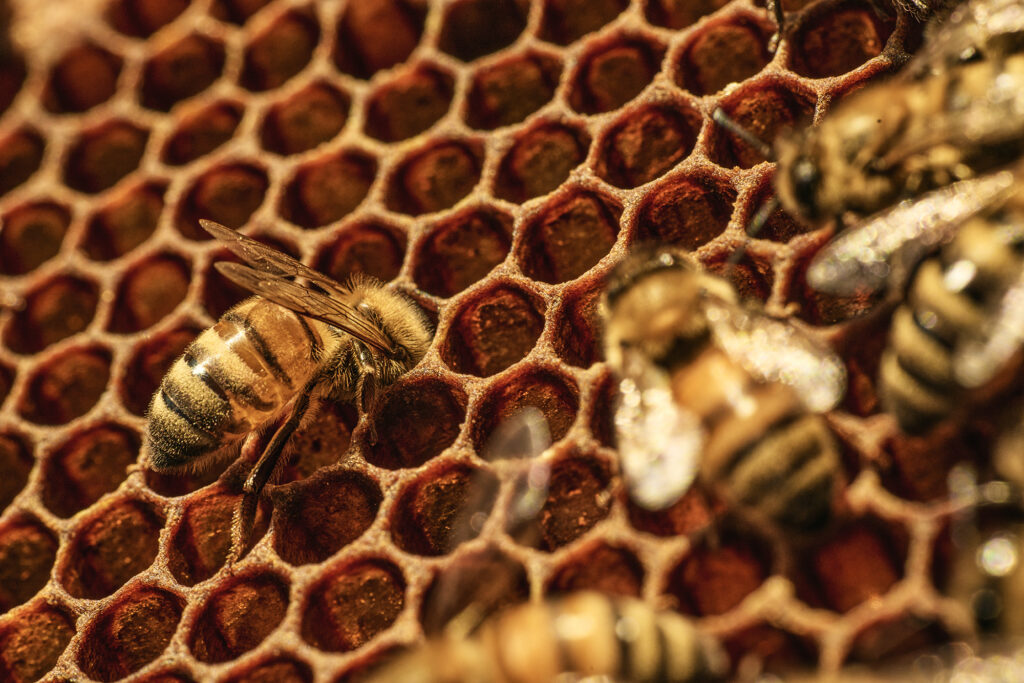
The honeybee is adaptable. It knows how to survive frigid winters, how to extract food from unlikely sources, like the mouths of blueberry blossoms, and how to navigate using the light of the sun and the magnetic pull of the poles. The honeybee can fly, dance, and hold its breath underwater for five minutes. It can move house, if necessary. It can move from climate to climate, and often has. The honeybee has thrived on every continent save one—but then again, we can’t blame it for not loving Antarctica. Few species do.
Good beekeepers are, like their wards, adaptable. Not just because they’re stewards of swarms, a famously strange phenomenon that we only partially understand, but because the Earth’s ecosystems are both delicate and resilient at the same time. One small change—a single-degree rise in ocean heat, for instance—can cause a cascade of disasters (which we still term “natural,” even though it’s becoming clear they are consequences of human activity). And yet, massive, sweeping changes can occur—animals can lose food sources, plants can invade and take over, storms can strip trees and fell giants—while life continues on. The system shifts, accommodates, adapts.
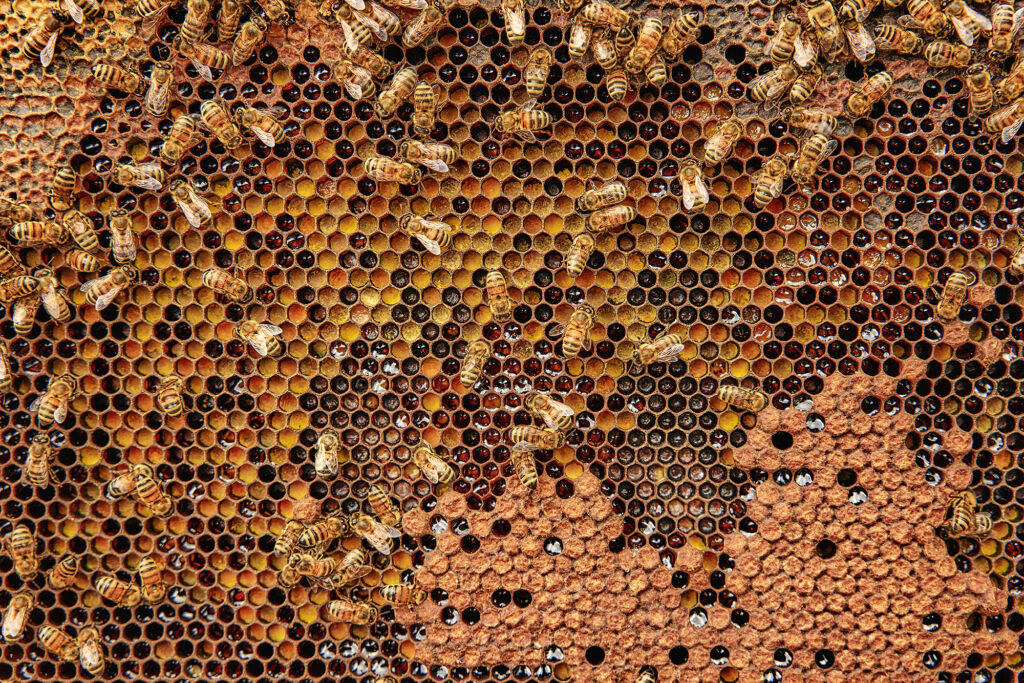
We’re living in a period of rapid change. In the 1960s, a group of Soviet scientists proposed the theory of a new geological epoch, which has been termed the Anthropocene. The name follows the pattern of previously named epochs (the Holocene, the Paleocene), with the root anthropo- meaning “of or related to human beings.” There is no specific date for the dawn of the Anthropocene; it began when people started having large-scale effects on the various systems of the globe. While it’s not universally recognized—according to most geological scientists, we’re still living in the Holocene epoch that began after the last ice age—the idea that our time on Earth is unique feels true to me on a gut level. I believe that climate change is happening, that people caused it, and that we’re also causing all sorts of transformations in the material world. Bees are just the tip of the (melting) iceberg.
But our world is changing in other ways, some of them positive. Let’s start with a feel-good story, one about the people who tend hives and harvest honey, before we dive into the plight of bees. “When I first started beekeeping, the folks who got the most attention were always that Burt’s Bees type,” says Thalassa Raasch, who has been keeping bees since they were a teenager living in rural Minnesota. “My view of the industry was limited, but it seemed male-dominated to me. And I think they encouraged that—there was a certain image of who a beekeeper was.” While I’m sure there are many lovely gentlemen beekeepers with bushy beards and locomotive hats, it’s heartening to hear that centuries-old agricultural traditions are welcoming in new blood.

“People think of beekeepers as old guys with a hive,” agrees Meghan Gaven of the Honey Exchange, a Portland-based business she co-owns with her husband, Phil. When we spoke, the Gavens had recently returned from the Maine State Beekeepers Association annual conference, where they had a chance to survey the crowd, mingle with newcomers, and discuss advances in bee science. Meghan and Phil have been beekeeping for 15 years, running the store for 11 years, and teaching beekeeping classes out of their Portland shop for a decade. Recently, they’ve noticed both an increase in would-be beekeepers and a shift in the classroom makeup. These days, their classes are female dominated by an estimated three-to-one ratio. “2020 was our biggest year in terms of interest in beekeeping,” Meghan says. “But 2021 was a close second.” During the pandemic, many people came to the Honey Exchange looking for a new hobby, a new way of interacting with the natural world, maybe even a new community to make up for the ones that broke down out of necessity and caution.

Beekeeping is a science and an art, a place where human intervention bumps up against animal instincts.
According to Meghan, this changing of the guard isn’t merely good for optics. It’s a much deeper shift than that, one that resists easy identification or description. “There are teenagers keeping bees now. Nine-year-olds. Women, men, older people, parents. It’s everybody, anyone you can imagine,” she says. “Every county in Maine has a beekeeping club. It’s a huge cross-section of people. You may not have anything in common except for bees, but it’s a great way to connect.” I’ve heard similar sentiments from passionate hunters, fishers, hikers, and gardeners. Spending time in nature allows for easy connection to others and the forging of bonds that cross tricky political lines. Nature can be a healthy “third space,” one that exists outside typical social boundaries and norms. Plus, research has shown that diverse groups are better at problem solving, and there are always problems to solve when it comes to bees. Experienced beekeepers can mentor the newly passionate, and beginner beekeepers can bring fresh eyes to entrenched problems.
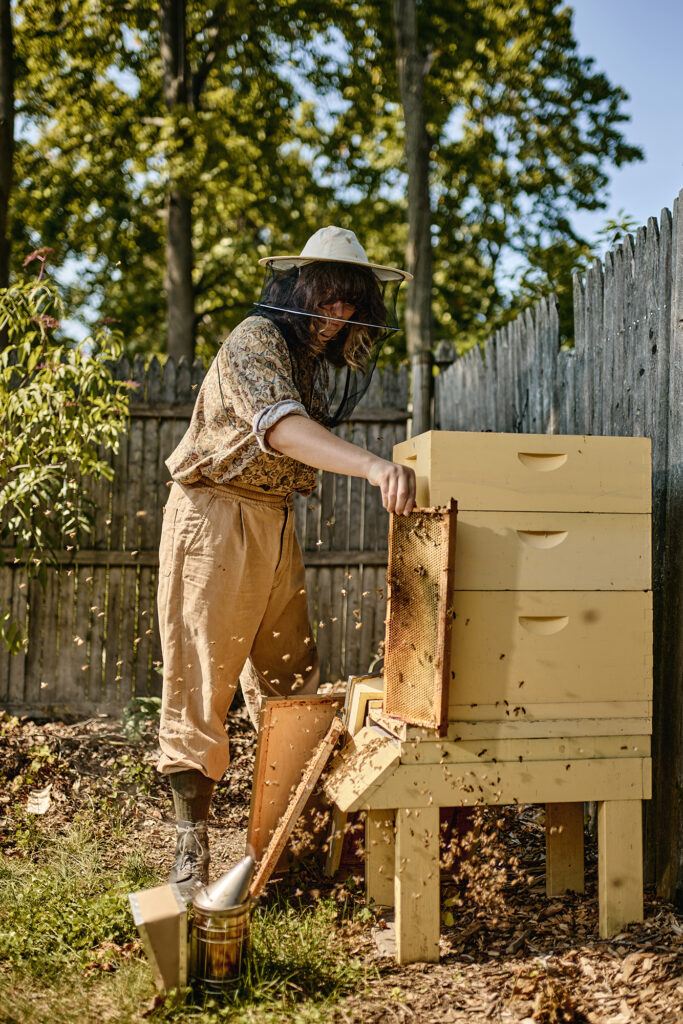
In 2022 the biggest problem facing farmers was the summer drought. Ponds, rivers, and lakes around the globe dried up, and Maine, a place famous for its abundance of fresh water, wasn’t entirely spared. The drought was less obvious than in other places, but our soil dried out, our rivers sank low, and wells rang empty. Without water, flowers continued to bloom as they always did, but they didn’t produce enough of the sweet, complicated, enzyme-rich nectar bees adore.
Honeybees can survive for some time without nectar. In fact, it’s common practice for beekeepers to supplement the diet of the hive with trays of sugar. Bees aren’t making their honey for us; they’re making it for their superorganism, their colony. When we remove their food, we have to give something back or they’ll starve, and the beekeeper will have to start again with a new swarm. Thus, beekeepers stock up on syrup and sugar cakes, the two best delivery methods for sweet, simple calories. While some studies have suggested that bees overwinter better on a diet of cane sugar than they do on reserved honey (it has something to do with their poop schedule), they don’t like to eat it all the time. It doesn’t have the same amino acids, proteins, ions, and lipids that bees find in nectar. It isn’t good for the baby bees, and bees that are consuming it don’t make very good honey. Some beekeepers don’t even consider this thin, watery yellow liquid honey at all, it’s such a pale imitation.



2. A swirl of honey; if bees don’t have enough calories they’ll “go backwards on their honey,” which is the expression beekeepers use when bees eat the honey before people can get it.
3. Honey takes on flavor from the nectar of local plants; with an explosion of knotweed in Maine, more local honey is taking on a characteristic nutty taste.
This is one reason Maine’s beekeepers have been embracing an unlikely ally: invasive plants. Knotweed, hated by many gardeners for its impenetrable root system and tendency to overwhelm local plants, blooms in the fall at precisely the time when foraging honeybees are in storage mode, gorging their two tiny bee stomachs in anticipation of winter. “For bees in this area, knotweed is the plant that gets them through winter,” says Meghan. “And it makes great honey.” She offers me a spoonful of knotweed honey, dark and thick. It has a faintly nutty aftertaste—it’s less herbal than the wildflower honey I’m used to, and somehow sweeter than the Ohio honey my father-in-law makes each summer. It’s not better, but it’s a different flavor, rather buttery and less botanical.
While it’s normal to talk about the terroir of wine, the placeness of that beverage, it’s always been easier for me to taste the specifics of land in honey. As the climate of Maine changes, the plant life will shift, the honeybees will find new food sources, and our honey will change its flavor to reflect this new world. Yet Maine State Apiarist Jennifer Lund cautions that knotweed may be doing more harm than good. “It outcompetes our native species,” Lund explains. “For two weeks, it provides good food for insects, but because it’s pushing out other plants that would flower throughout the summer and fall, it’s creating gaps that bees have to struggle to fill.” It may not seem like a big deal to have dense clumps of knotweed growing alongside telephone lines or in highway ditches, but that same soil would have once been home to a variety of flowering weeds, grasses, and bushes. Though it has to be said: not all of them are native to Maine, either—nor are honeybees themselves.
If I sound a bit torn about invasives, that’s because I am. Some invasives are delicious to forage, like Japanese silverberry, while others look gorgeous, like rambler rose and burning bush. The golden knotweed honey was delicious, and I understand why beekeepers are happy their bees are fed, even if they’re feasting on an intruder.
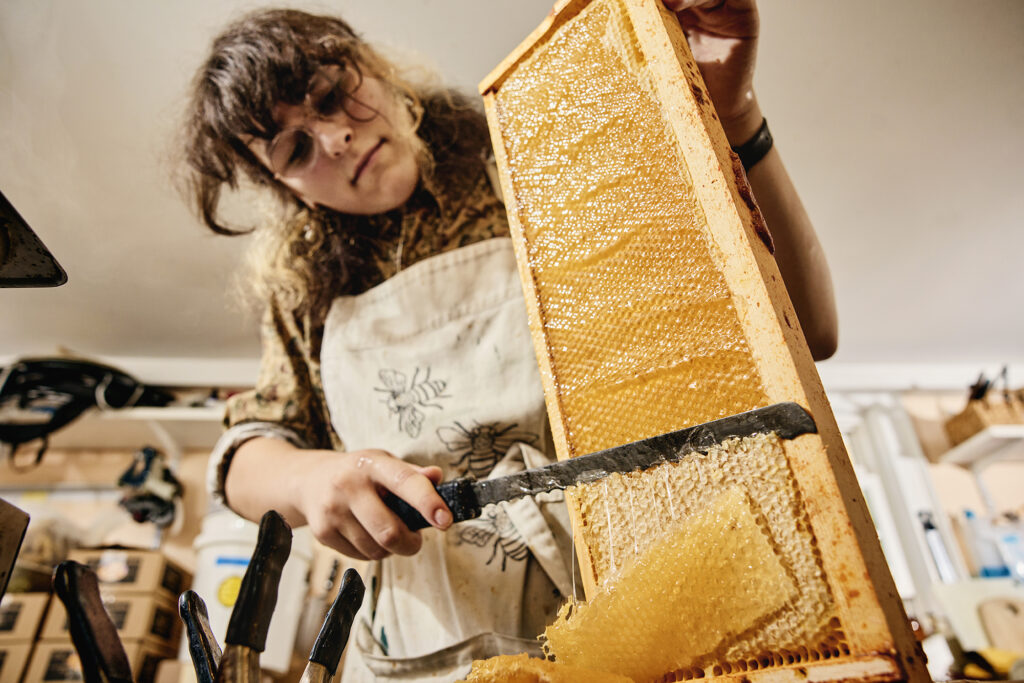
It’s harder to be sanguine about the prospect of frozen honeybees. Ironically, colonies are dying of cold thanks to global warming, and the way in which this happens strikes me as nothing short of tragic. Historically, honeybees kept warm in cold weather by clustering together and vibrating to generate heat. Thanks to some evolutionary magic, the clump of bees knows how to rotate its members. Everyone gets a turn to flutter in the warm middle of the clump, and everyone gets a turn cooling off on the outside. The size of this group depends on the weather. Cold days require big, dense clumps of bees. On warmer days, the hive can spread out and move around. They can even go outside to relieve their guts, maybe forage for food, get a little breathing room—whatever it is that bees do on their time off.
But when the weather turns on a dime, plunging from balmy 70s to frigid 20s, honeybees don’t have enough time to regroup. “It used to be that January was cold, with a few slightly warmer days,” says Lund. “But now we have wide fluctuations where we are rapidly changing temperatures. And the bees don’t know how to accommodate that.” Their instinct is to cluster and form smaller buzzing balls with whomever is nearby. Some die outside the hive, others die inside. They get cold, sickly, ill. Their lives are cut short, and the beekeeper is left wishing they’d known to insulate their boxes or remove an excess frame.

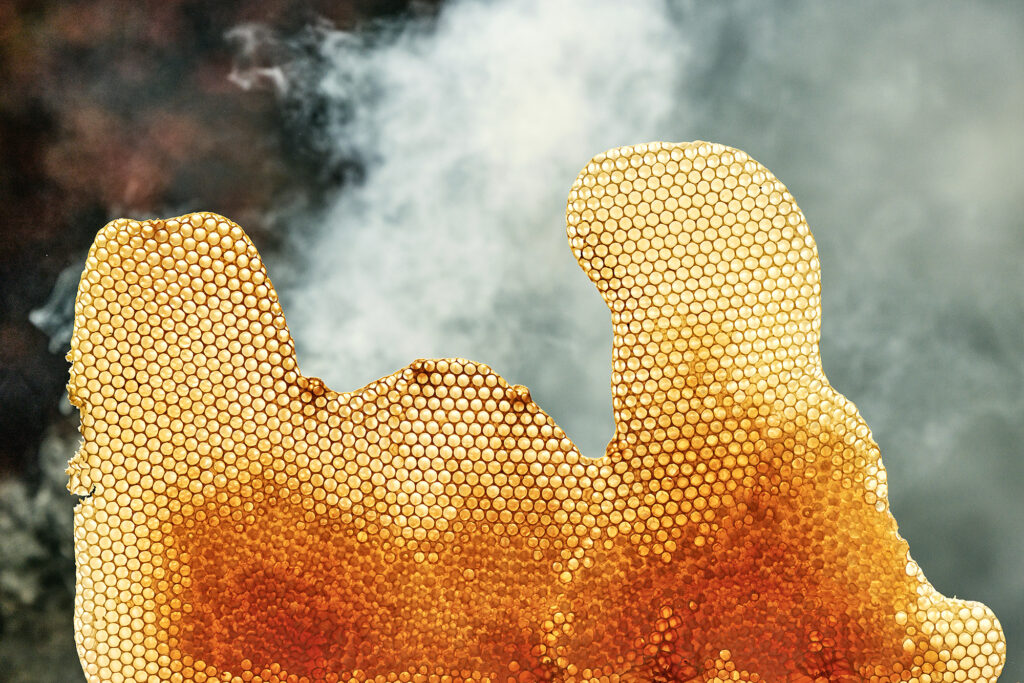
Drought, cold, unseasonable warmth, lack of food—all these issues get exacerbated by the presence of mites. It’s one of the leading causes of colony collapse in Maine, yet many beekeepers (particularly the traditionalists) don’t treat or test for them. Mites are the first challenge mentioned by every beekeeper I speak with, and perhaps that’s because it’s such a frustrating topic. “It’s mites, mites, mites,” says Meghan with exasperation. “That’s the biggest problem beekeepers have. They bring disease, they weaken the colony, and they make bees less capable of surviving cold seasons or lack of food.” Thao Kieu, a South Portland–based beekeeper and visual artist who once worked at the Honey Exchange with Meghan, echoes her mentor: “My bees have been weak this year, and I wonder if it’s because of new beekeepers. If the people who just started don’t treat for mites, that would explain why my colony is suffering.” It’s frustrating, agrees Lund, to see so many people disregard the opinions of the apiary experts, who recommend treating for mites before they appear and regularly testing hives. “People often say, I don’t see them, so I don’t have them,” says Meghan. “By the time you see them, it’s too late.”
But that’s the thing, isn’t it? Beekeeping holds all the drama of the globe, writ small. There’s an increase in diversity among beekeepers, a decrease in diversity among plants, new viruses, old prejudices, droughts and famines and danger of collapse. It’s a traditional practice that is only just recently becoming truly inclusive. Beekeeping is a science and an art, a place where human intervention bumps up against animal instincts. For people like Kieu, it’s more than just a hobby. It’s a philosophy. “I’ve become a bee nerd, and I take so much pride in that. It’s a way of living, to understand how everything is interconnected,” she says. From Phil and Meghan and her other beekeeping friends, Kieu learned to see her hives as something to emulate. “A honeybee hive is badass,” she says. “It’s feminist. It’s so interesting, the dynamics of a hive and how it translates back to our functioning.” For beekeepers to thrive, the insects have to be healthy, the plants have to be watered, the atmosphere must be considered, cleaned, healed. It’s part of a whole entangled system, one we’re still learning how to navigate—one we may never completely understand. “But that’s the joy,” says Lund. “With bees, there’s always something new to learn.”

Read More:
- Claiming Space at the Table

- How to Go Antiquing Like a Mainer

- Four Young Writers to Watch in the Pine Tree State

- Milkweed Man

- A Stitch in Time


